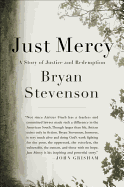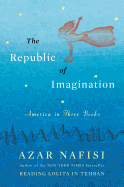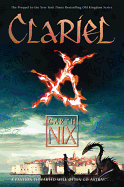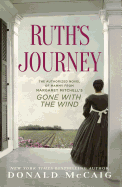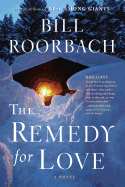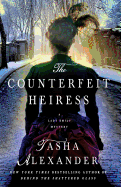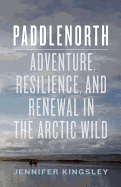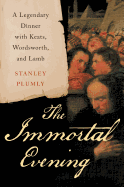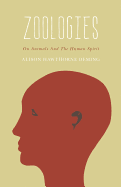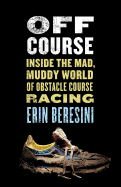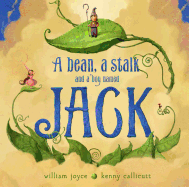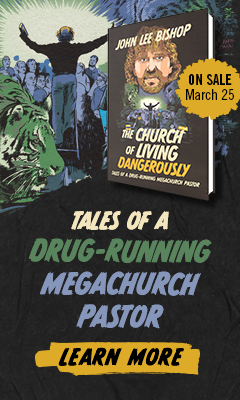Week of Friday, October 24, 2014
The New York City Marathon will sweep through the five boroughs on November 2, with tens of thousands of runners dashing 26.2 miles in the name of perseverance, determination and, in some cases, a favored charity. For many, though, the idea of running one mile, let alone 26, is a daunting prospect.
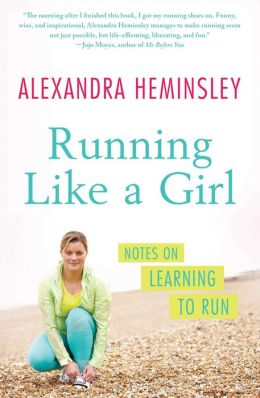
Born to Run approaches the sport from a different angle, questioning why some runners are so injury-prone while tribal people running in the deserts of Mexico's Copper Canyons can cover hundreds of miles without rest or injury. Journalist Chris McDougall's hunt for an answer takes readers through the science of running to the growing trend of ultra events (even more miles than a marathon), as he dives into what it is to run for the joy of it.
Running can be tackled at any age; in fact, the average age of ultramarathoners is over 40. Case in point: author Margaret Webb found herself staring down her 50th birthday and decided to see if she could join the ranks of competitive women runners. Older, Faster, Stronger is an account of her training, as she explores nutrition, exercise and aging through the lens of this competitive sport. Webb's thorough explanation of the science behind her work will prove invaluable to any reader, of any age, looking to push the limits of what their body can do.
Just be careful if you decide to pick any of these titles up: runner or no, you may be tempted to lace up your shoes and try a mile. Or 26.2 of them. --Kerry McHugh, blogger at Entomology of a Bookworm
Ruth's Journey
by Donald McCaig
In Ruth's Journey: The Authorized Novel of Mammy from Margaret Mitchell's Gone with the Wind, Donald McCaig (Rhett Butler's People) tells the full story of Scarlett's beloved nursemaid. He begins in France with Miss Solange, a wealthy heiress who travels to Saint-Domingue (now Haiti). There she takes in a local child to be part servant, part daughter, and names her Ruth, then moves to Savannah. Switching focus to Ruth, McCaig details her eventual brief marriage to a free man in Charleston, years of tragedy and rebellion, and her return to Savannah.
Though McCaig does touch a bit on Scarlett's well-known story, the bulk of the narrative is focused on Ruth's early life: the voyage to the U.S., her transition to adulthood, her loves and losses, and the moment she deliberately gives up her name and identity in favor of a new moniker: Mammy. Miss Solange has a daughter, Ellen, who in turn gives birth to the memorable Katie Scarlett O'Hara. Where Scarlett is petulant, Mammy is resilient. Through decades of love, death and betrayal, she consciously puts on a smile. She is cursed to foresee the ugly futures of those she cares for, but, as she repeats to herself, it is not for mammies to speak all that they see.
McCaig echoes the saucy, tongue-in-cheek tone of Mitchell's classic. Mammy's story is complex, and she commands respect. Lovers of Gone with the Wind will be the most obvious fans of Ruth's Journey, but it stands on its own merits as a sweeping epic of time, place and history, thoroughly worthy of its inspiration. --Julia Jenkins, librarian and blogger at pagesofjulia
Discover: A familiar, but not unoriginal, expansion on a beloved character from a classic American epic.
The Remedy for Love
by Bill Roorbach
The two protagonists in Bill Roorbach's The Remedy for Love are strong enough to sustain the edge-of-your seat atmosphere, but the snowstorm rolling into Maine becomes a third party, and a doozy of a character. As in his Life Among Giants, Roorbach slowly unveils his characters' backgrounds to build suspense.
Although he's a struggling lawyer in a backwoods town, Eric can't stifle his chivalry when the seemingly homeless customer in front of him in the grocery line can't pay. It's a clear night, but the Storm of the Century is forecast, so he supplements her cash and then offers her a ride. His long-anticipated reunion with his estranged wife is hours away, so he has time. The crusty and skeptical Danielle reluctantly accepts his help, letting Eric carry her bags down the incline to her cabin as the desultory inaugural snowflakes become thick and heavy. The blizzard hits with a vengeance, stranding them in the crumbling cabin she's appropriated, and as they wait out the storm, they learn one another's stories, accept their codependency and try to survive.
Their situation becomes increasingly dire, but Danielle's defensiveness seldom mellows, and Eric swings from sympathy to ire. Forced proximity, cagey attitudes and a frigid setting make for some hilarity, and the basic goodness of the two mismatched housemates invites thoughtful dialogue and reflection. What drove this young woman to become a squatter in a lonely Maine forest? Is Eric's wife really coming back? Who rescues whom? In the end, for Eric and Danielle, the difficulty of facing the increasing snowdrifts is matched by the challenge of honestly confronting their own lives. --Cheryl Krocker McKeon, manager, Book Passage, San Francisco
Discover: Two strangers waiting out a Maine blizzard together force each other to accept truths they've been denying.
Mystery & Thriller
The Counterfeit Heiress
by Tasha Alexander
An elegant masquerade ball in fin-de-siècle London provides the perfect occasion for Lady Emily Hargreaves to dazzle, dressed as the goddess Artemis, but the evening ends in chaos after a similarly costumed woman is found murdered. As Emily and her husband, Colin, investigate, they realize that the dead woman, Mary Darby, was posing as heiress Estella Lamar, who is ostensibly traveling the world. No one has actually seen Estella for years, apart from some blurry newspaper photos taken in various exotic locations. Why would anyone pose as Estella? Did the killer mean to murder the heiress or the impostor? And is the real Estella still alive?
In her ninth Lady Emily novel, Tasha Alexander (Behind the Shattered Glass) weaves a compelling double mystery, alternating between Emily's attempts to solve Mary's murder in 1897 and Estella's story in Paris several decades earlier. After the death of her parents, Estella was left with a sizable fortune but few friends. Shy and socially awkward, she gradually withdrew from society--but an unwise business investment might have led to more than financial loss for her.
The return of familiar series characters, including Emily's Parisian friend Cécile du Lac (Estella's childhood friend) and the lazy dandy Jeremy Bainbridge, will delight longtime readers, but Alexander provides enough background to give new readers a sense of Emily's history. Witty, well-plotted and rich with historical detail, The Counterfeit Heiress is an engaging chapter in Lady Emily's story and an evocative glimpse into Victorian London. --Katie Noah Gibson, blogger at Cakes, Tea and Dreams
Discover: An absorbing double mystery, with witty characters and a lavishly detailed Victorian setting.
Biography & Memoir
Paddlenorth: Adventure, Resilience, and Renewal in the Arctic Wild
by Jennifer Kingsley
In her debut, Paddlenorth, radio producer and naturalist Jennifer Kingsley describes herself as a prickly person. Like many with a slightly cantankerous disposition, Jennifer found refuge in the space and freedom of the great outdoors. She had already made many treks into the Canadian wilderness, but in 2005 she and five friends undertook their most ambitious trip yet: a 54-day canoe journey through the stark Canadian tundra, following the Back River to its source in the Arctic Ocean.
With three canoes, a small mountain of supplies and amazing boldness, they said goodbye to their friends and family and headed into the unknown. Over the next two months they encountered dangerous rapids, ice-choked rivers and brutally cold winds. They endured agonizing swarms of mosquitos, excruciating blisters on their hands and feet, and an increasing sense of isolation from the outside world. In those 54 days, they spoke to a mere handful of people outside their group, forcing them to confront their own social and personal boundaries.
Kingsley beautifully describes the gorgeous, deadly tundra, with its herds of caribou and pervasive bugs; the Back River is practically a seventh member of her group. Each of the six friends must come to terms with the power of the river and the feelings that result from being isolated in such wilderness. The physical and emotional rawness of the trip is keenly felt in Kingsley's prose, leaving the reader to ponder the incredible toll such a journey would take. --Jessica Howard, blogger at Quirky Bookworm
Discover: A two-month journey across the Canadian Arctic wilderness tests the physical and emotional limits of six friends.
The Immortal Evening: A Legendary Dinner with Keats, Wordsworth, and Lamb
by Stanley Plumly
Distinguished poet Stanley Plumly (Orphan Hours) turned his attention to the great poet John Keats a few years ago with his perceptive biography Posthumous Keats. He does so again, in a different context, with the thoroughly entertaining and captivating The Immortal Evening. Joining Keats this time are William Wordsworth, Charles Lamb and a few others, at an evening dinner (and supper) in northern London hosted by the once-well-known historical painter Benjamin Haydon. The gathering is to celebrate and honor the guests, who are prominently featured in Haydon's still unfinished, massive (13' x 15') painting Christ's Entry into Jerusalem.
Plumly sets the table for the immortal evening by detailing how far each guest had to walk to get there. Keats had the most ground to cover: three miles. The dinner party occurred on December 28, 1817, so each was bundled up, lanterns in hand. Much drinking occurred, and napping. But Plumly tricks us; this book is much more than a convivial recounting of good food and talk. It provides him the opportunity to range far and wide, discussing these men's careers--how they intertwined with one another--with Haydon's as the underlying narrative. Plumly also examines the times in which they lived, how they lived and their contemporaries: Percy Bysshe Shelley, William Hazlitt, Walter Scott, Samuel Taylor Coleridge and Leigh Hunt.
Plumly's wise telling and silky prose are as comfortable and warm as these figures were at their dinner. If not immortal, Plumly's tour of this historic evening and age is more than memorable. --Tom Lavoie, former publisher
Discover: What happened at a memorable dinner attended by three men who would go on to typify the Romantic era.
Political Science
Just Mercy: A Story of Justice and Redemption
by Bryan Stevenson
With all the suspense of a John Grisham thriller, attorney Bryan Stevenson, director of the Equal Justice Initiative in Montgomery, Ala., offers a narrative about his work with the people most desperately in need of legal assistance.
Just Mercy centers on the story of Walter McMillian, a young, black entrepreneur who was convicted of a murder he insisted he didn't commit. The evidence supporting McMillian's claim was overwhelming, yet he was sentenced to die in the electric chair. When Stevenson takes on McMillian's cause, he discovers a case steeped in conspiracy, misconduct, racism, even adultery, proving that fact can often be more harrowing than fiction. The case also involves a disturbing element of irony--the 1986 murder took place in Monroeville, Ala., childhood home of Harper Lee and the basis for her setting in To Kill a Mockingbird.
Interspersed with McMillian's tragedy are short vignettes of other cases Stevenson and the Equal Justice Initiative undertake: children sentenced to life in prison, 13- and 14-year-olds placed in adult correctional facilities, the mentally ill on Death Row. Stevenson never discounts the actions of his clients that led them to their circumstances, but he does present a picture of the whole individual and reminds readers, "each of us is more than the worst thing we've ever done."
Stevenson's deft storytelling skills will keep readers engrossed in McMillian's fate, and his passionate dedication to the men, women and children he represents will illustrate a heart-wrenching side of the American penal system that is too often and too easily ignored. --Jen Forbus of Jen's Book Thoughts
Discover: The gripping true story of one lawyer's desperate fight to save a man wrongfully convicted of murder.
Essays & Criticism
The Republic of Imagination: America in Three Books
by Azar Nafisi
Inspired by a young Iranian man who believed Americans don't--or rather, can't--truly care about books, Azar Nafisi (Reading Lolita in Tehran) considers if the privileges Americans enjoy insulate them from the world's great literature, particularly their own. Must one be a revolutionary to appreciate radical books and lyrical prose? As literature is deemphasized in favor of STEM education and career readiness in schools, how can readers protect their own sacred territory, the Republic of Imagination?
Nafisi explores this "republic" and its connection to American identity through close readings of three classics. She begins with Mark Twain's Adventures of Huckleberry Finn, tracing Huck's evolution from a runaway boy into a true outsider, a young man who chooses to live outside the rules of his society when they run counter to his conscience. Nafisi next examines Sinclair Lewis's Babbitt. Published in 1922, its portrait of consumer society rings disturbingly true today, and Nafisi cautions against the "standardization of thought" portrayed in the novel, pointing to the troubling aspects of the current Common Core standards as an example. In the last section, she compares the life of Carson McCullers, a perpetual outsider, with the misfit characters who populate her novel The Heart Is a Lonely Hunter.
Throughout this book, Nafisi weaves in anecdotes from her own life as an outsider, including the day she took the oath to become a U.S. citizen. In elegant, insightful prose, she blends literary criticism, personal history and social commentary to create an enticing invitation to inhabit the Republic of Imagination. --Katie Noah Gibson, blogger at Cakes, Tea and Dreams
Discover: An exploration of American literature and identity through the lens of Adventures of Huckleberry Finn and two other classic novels.
Nature & Environment
Zoologies: On Animals and the Human Spirit
by Alison Hawthorne Deming
In Zoologies, a collection of essays on the relationship between humans and the natural world, poet Alison Hawthorne Deming (Rope) tackles questions about what separates humans from their feathered, four-legged and aquatic counterparts. Be they swans, hogs or whales, the answer appears to be very little.
Whether she's addressing endangered birds ("Owl Watching in the Experimental Forest") or ancient behemoths ("Murray Springs Mammoth"), Deming's essays poke and prod, unfurling a litany of questions that she doesn't always answer. In tales of extinction and endangerment, she charges her reader with taking part in the search for solutions, even when they're difficult--or nigh impossible--to envision.
In "The Pony, the Pig, and the Horse," she writes of the hardscrabble years in which she raised her daughter alone in rural Vermont. As she describes both the butchery of a family pig and her daughter's love for Traveler, a wily horse, Deming's awe and adoration for the beings that sustained them is evident. Like the best writers, she can balance two oppositional ideas simultaneously: the animal as food source and friend, inferior and equal.
In her essay "The Finback," about a dead, bloated whale that's washed ashore, Deming writes, "Perhaps something in me knows that if I can't stand the sight of what disgusts me, I haven't the strength to love anything in this difficult world." She challenges her readers to look harder, to take in realities both daunting and heartening, in the hope that humans can learn to value and protect biodiversity. Zoologies is more than a meditation--it's a call to arms. --Linnie Greene, freelance writer and bookseller at Flyleaf Books
Discover: A lyrical meditation on animals and their relationship to mankind, from folklore to modern conservation efforts.
Sports
Off Course: Inside the Mad, Muddy World of Obstacle Course Racing
by Erin Beresini
Erin Beresini was a committed Ironman triathlete and endurance athlete facing overtraining injuries and burnout when she first heard about obstacle course racing (OCR). How silly, she thinks, and how divergent from her past efforts--perhaps just the thing to make new friends, find new motivation and relieve her overstressed muscles by working new ones. From her first mud run she is hooked, and gratifyingly exhausted. She jumps feet first into this bizarre new scene, undertaking a journey that culminates in racing the OCR world's first marathon-length event, the Spartan Ultra Beast. In Off Course, she documents her labors.
Throughout Beresini's often-funny personal story, she interjects details of the history and quirks of this recent trend in amateur athleticism. Characterized by mud, fire, ice and blood--and often involving broken bones, electric shocks, sadistic beatings and barbed wire--OCR strikes many as an insane way to chase fun and fitness. As it happens, millions have signed up for these events in recent years, in the United States and around the world. The sport draws "regimented military types and anti-organized sports rebels," and shares a fan base with CrossFit and endurance athletics. Beresini also scrutinizes the compelling personalities (and controversies) behind the sport's two main powerhouses, Spartan Race and Tough Mudder, as well as a handful of their participants. As weird as this tale is, it will appeal to both fans of sports narratives and readers who appreciate offbeat obsessions. --Julia Jenkins, librarian and blogger at pagesofjulia
Discover: One woman's exhilarating experience in a strange extreme sport.
Poetry
Blue Horses: Poems
by Mary Oliver
Nature-poetry lovers can rejoice: Mary Oliver (Dog Songs) is once again in splendid form, this time with a slim, powerful collection of 39 poems centered on the natural world. She embraces the often-overlooked aspects of the flora and fauna that surround her and invites readers to sit and contemplate what it means to be part of one's environment.
In "After Reading Lucretius, I Go to the Pond," she eloquently describes the connection she feels to the Earth and its creatures as she writes, "The slippery green frog/ that went to his death/ in the heron's pink throat/ was my small brother/ and the heron/ with the white plumes/ like a crown on his head/ who is washing now his great sword-beak/ in the shining pond/ is my tall thin brother." In addition to studying many animals and birds, Oliver turns her gaze to the silence of the forest, the beauty of beach stones laid in a bowl of water and the invigorating clamor of a river as it pours timelessly over a course of rocks. Beyond these images of nature, Oliver also examines what it means to be in love, her attempts at learning yoga and what people really want from a poem ("they want something/ inexplicable/ made plain,/ easy to swallow").
Oliver is able to make the abstract concrete in such an enjoyable manner that readers are never left wondering what she means by her words. At her finest, she leaves readers of her poetry with the feeling that they've been touched by grace. --Lee E. Cart, freelance writer and book reviewer
Discover: A beautiful new collection centered on the natural world from a master poet.
Children's & Young Adult
Clariel
by Garth Nix
Set in the Old Kingdom, 600 years before events related in Sabriel, Garth Nix's new novel immediately plunges readers into the same complex world of Charter Mages, Free Magic and sorcery. Here the author features 17-year-old Clariel, who wants nothing to do with politics or power, yet becomes deeply embroiled in both.
Forced to leave behind her beloved town of Estwael, encircled by the Great Forest, for the capital city of Belisaere, Clariel desperately wants to return home and become a Borderer, one of the wardens who patrols the forests. But as a member of the powerful Abhorsen family and the daughter of a High Goldsmith, Clariel must attend school with the "best people," take lessons in Charter Magic and, she later learns, marry the son of the highly ambitious Governor Kilp--so she may serve as a "puppet Queen" on the throne. Clariel grows increasingly frustrated with her options. A Free Magic creature attacks her, and she is able to subdue it--and in the process discovers her own powers. Seduced by the lure of Free Magic to get what she wants, Clariel feels compelled to look outside the safety of the Charter. A plot to overthrow the King forces her to act, but will Clariel's methods lead to her undoing?
Nix's tale provides a complete experience unto itself. But his focus on this strong character whose overriding passion is to go her own way provides a hugely satisfying background to the other Abhorsen books. --Lynn Becker, host of Book Talk, the monthly online discussion of children's books for the Society of Children's Book Writers & Illustrators
Discover: A suspenseful prequel to the much-loved Abhorsen books, showcasing the independent Clariel.
A Bean, a Stalk and a Boy Named Jack
by William Joyce and Kenny Callicutt
William Joyce (The Fantastic Flying Books of Mr. Morris Lessmore) and debut picture-book artist Kenny Callicutt collaborate on an energetic retelling of Jack and the Beanstalk. From "Once upon a time," when the smallish green bean is introduced, they retell the story in a contemporary tone, with plenty of asides for both adults and children to enjoy.
Jack lives in a kingdom suffering from a drought ("the crops dried up. And the wells dried up, and the rivers and the lakes and the moats and the birdbaths"). The king's pinky has become stinky, so he forces his subjects to cry in order to produce enough tears to wash it. This embarrasses his daughter, so she visits the kingdom's wizard and pleads for help. Once the wizard gets going, magical things begin to happen....
The imprint of Moonbot Studios (where Joyce and Callicutt collaborate) shines throughout this book. Double-page spreads propel the story as the illustrations jump off the page. When the bean finally grows to a beanstalk, readers young and old alike will delight in the sudden explosion. The plumbing high above the clouds invites readers to trace the path water might travel.
A red-headed black bird appears on every page, and Joyce and Callicutt code speech bubbles specific to each character: Bean's are leaf-shaped, and Jack's resemble a combination of his shepherd's crook and a lamb's wooly coat. This sense of detail, combined with signature artwork, sly wit and a familiar story, make this picture book one to read over and over. --Cathy Berner, Blue Willow Bookshop, Houston, Tex.
Discover: A visually layered retelling of Jack and the Beanstalk from Moonbot Studios.
Sam and Dave Dig a Hole
by Mac Barnett, illus. by Jon Klassen
In this funny, deadpan adventure from the team behind Extra Yarn, two boys and their dog set out to dig a hole and wind up in a place they'd never expected.
Two boys walk out from a porch where a red tulip blooms, while their pet cat, wearing a red collar, stays behind. A rooster-shaped weather vane points in the direction in which they're headed. Their brown spotted pooch leads the way. They pause near an apple tree: "On Monday Sam and Dave dug a hole." When the shoveling lands them waist-high in a hole, Sam wonders, "When should we stop digging?" Dave answers, "We won't stop digging until we find something spectacular." A cutaway view reveals a perfectly diamond-shaped pink gem hidden in the ground beneath the apple tree. Later, the dog digs downward toward a larger diamond, now less than a foot beneath them. But Dave thinks, "we should dig in another direction." Mac Barnett's deadpan text will have children yelling, "No, no, dig down!" Yet Sam agrees, "Yes.... That is a good idea." This vaudevillian line of dialogue continues as Dave suggests they split up. Each time, Jon Klassen reveals more of the steadily escalating joke.
As the dog closes in on a prize, the world turns topsy-turvy. "Sam and Dave fell down,/ down,/ down...." The dog may be the only one with buried treasure, but the boys have certainly experienced something spectacular. But wait, look carefully at that cat, that porch, that tree in the yard. The boys' lives are forever changed by their adventure. --Jennifer M. Brown, children's editor, Shelf Awareness
Discover: A topsy-turvy treasure-seeking adventure that changes the lives of two brothers and their dog forever.
| the church of living dangerously |
|


